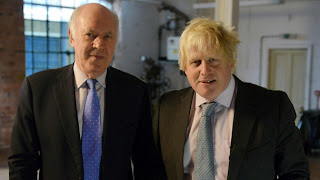In recent weeks
I have been discussing the importance of keeping to time in any kind of
presentation and how a short presentation invariably needs more planning and rehearsal
than a long one. Message distillation,
which always plays an important role in ensuring clarity of communication, also
becomes crucial in short presentations.
There are
various techniques for message distillation and most appear to be quite simple; actually
putting it all into practice, however, tends to be rather difficult. So I draw inspiration from the movie makers,
who have a range of particular needs to distil their messages. They have to
start by pitching the idea to the money men and once their film has been made
their promotion is often dependent on the limited medium of posters, together with word of
mouth. So they need to get people talking – and doing so accurately – about
their movie. Furthermore, the window of
opportunity is short. Unless people respond
to the word of mouth in the next week or so it will be too late; the movie will
already have gone from the cinemas.
Steven Spielberg
says: “I like ideas you can hold in your hand. If a person can tell me their idea
in 25 words or less, it’s going to make a pretty good movie”. Sam Goldwyn was
rather more succinct, declaring: “If you can’t get your idea on the back of a
business card you ain’t got a movie”.
Movie makers
therefore work around the principle of ‘high concept’ – a short sentence that
tells you all you need to know about the movie and inspires you to go and see
it. Examples include:
An asteroid a s big as Texas is hurtling towards Earth – ArmageddonBoy and girl from rival gangs fall in love in the middle of a gang war – Romeo & Juliet
Giant shark terrorises holiday resort – Jaws.

My own favourite example of High Concept concerns Sandra Bullock’s early success Speed, which was all about a bomb on a bus which would go off if the bus travels at less than 55 mph....and rush hour has just started. This was really a little too wordy for a High Concept, so within the business it soon became referred to as ‘Diehard on a bus’. Now you exactly what to expect.
Finally, the
ultimate High Concept film has to be Snakes
on a Plane. The High Concept wording stuck for a while as a working title, until Samuel L. Jackson's agent insisted that a ‘proper’ title be adopted,
because his client "couldn't work on a film with such a title”. When
Jackson heard about this he responded with the much cited comment: "We're totally changing that back. That's the only reason I took the job:
I read the title."
Extracted and
adapted from Nick Fitzherbert’s book Presentation Magic, published by Marshall Cavendish.










